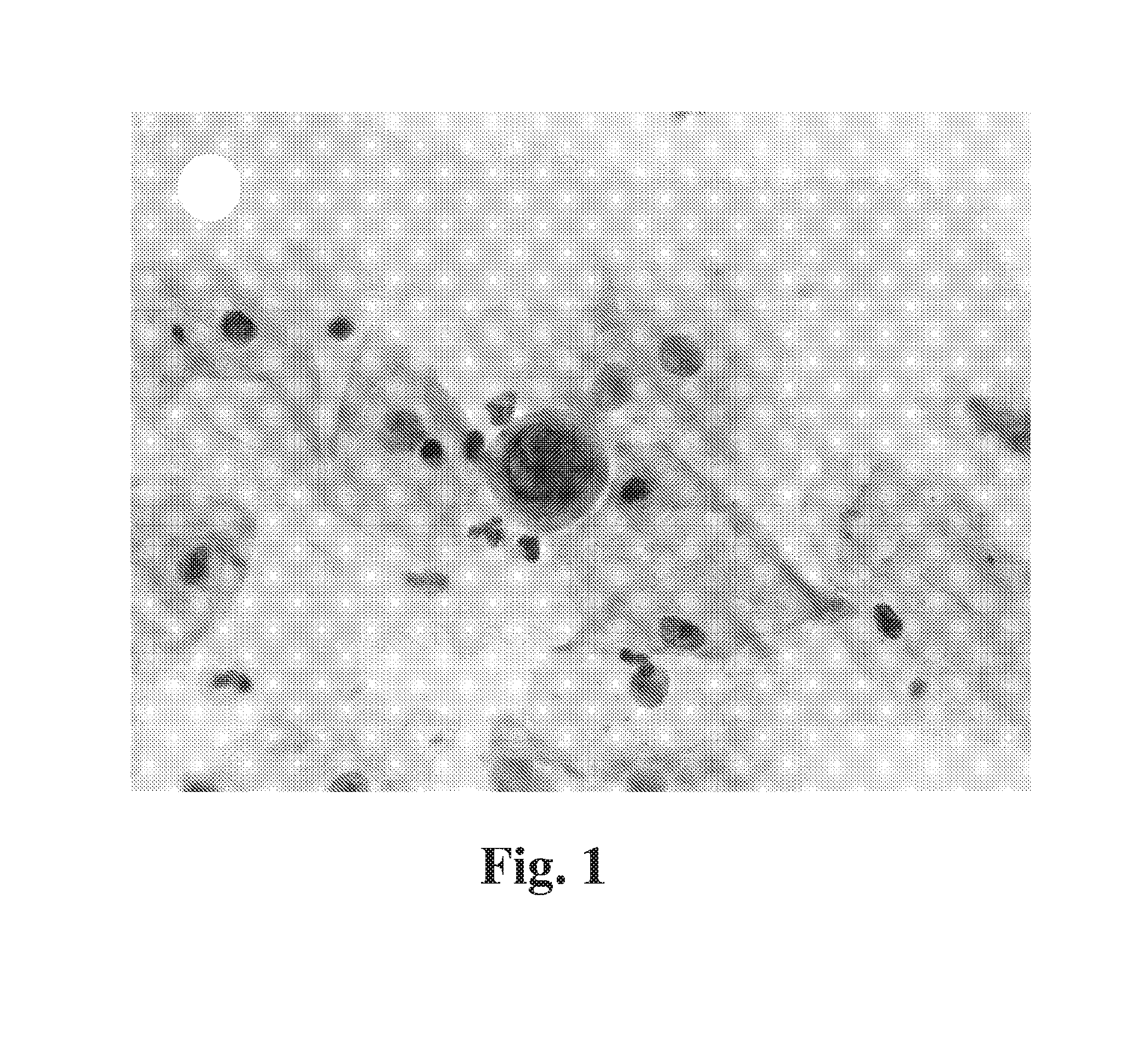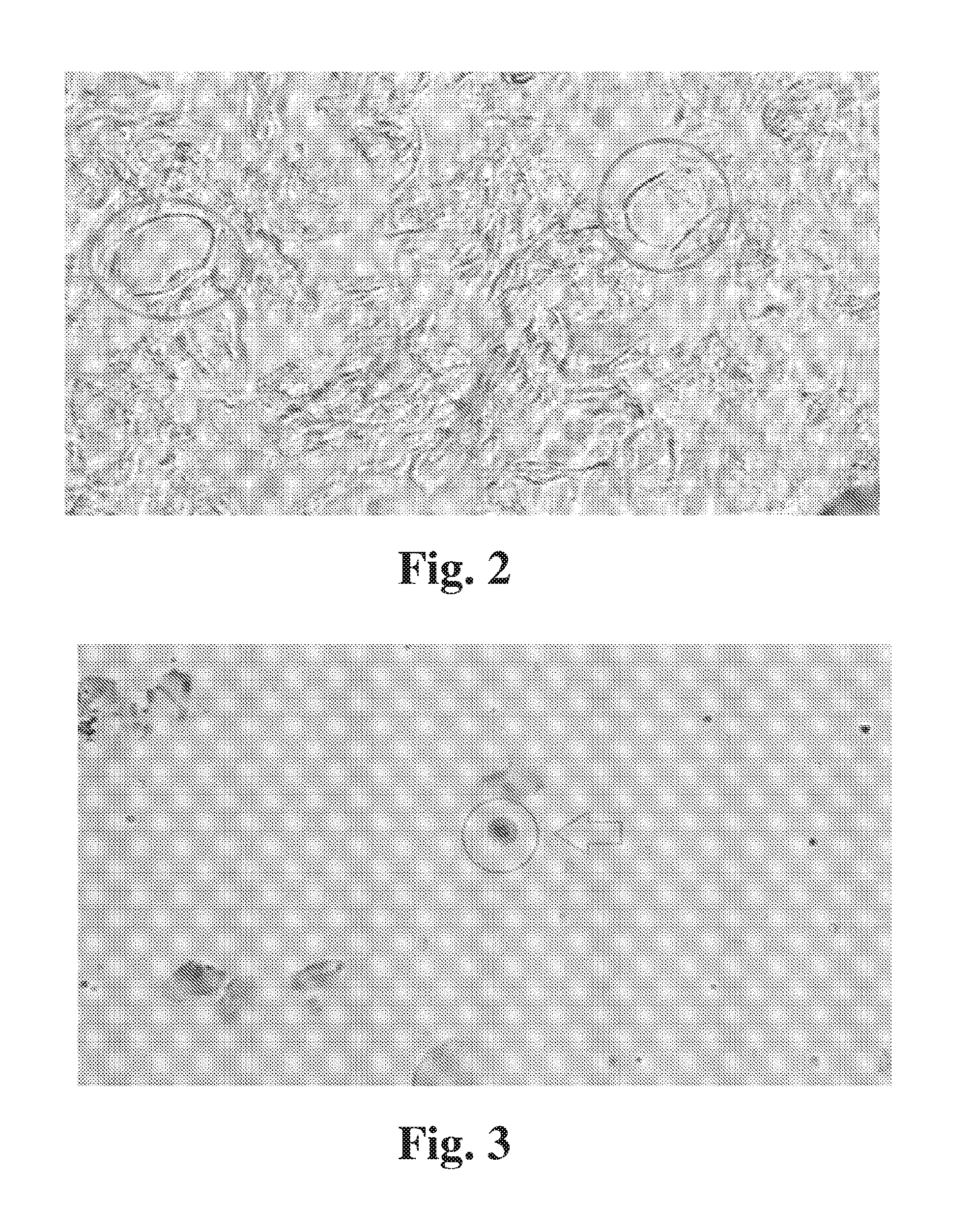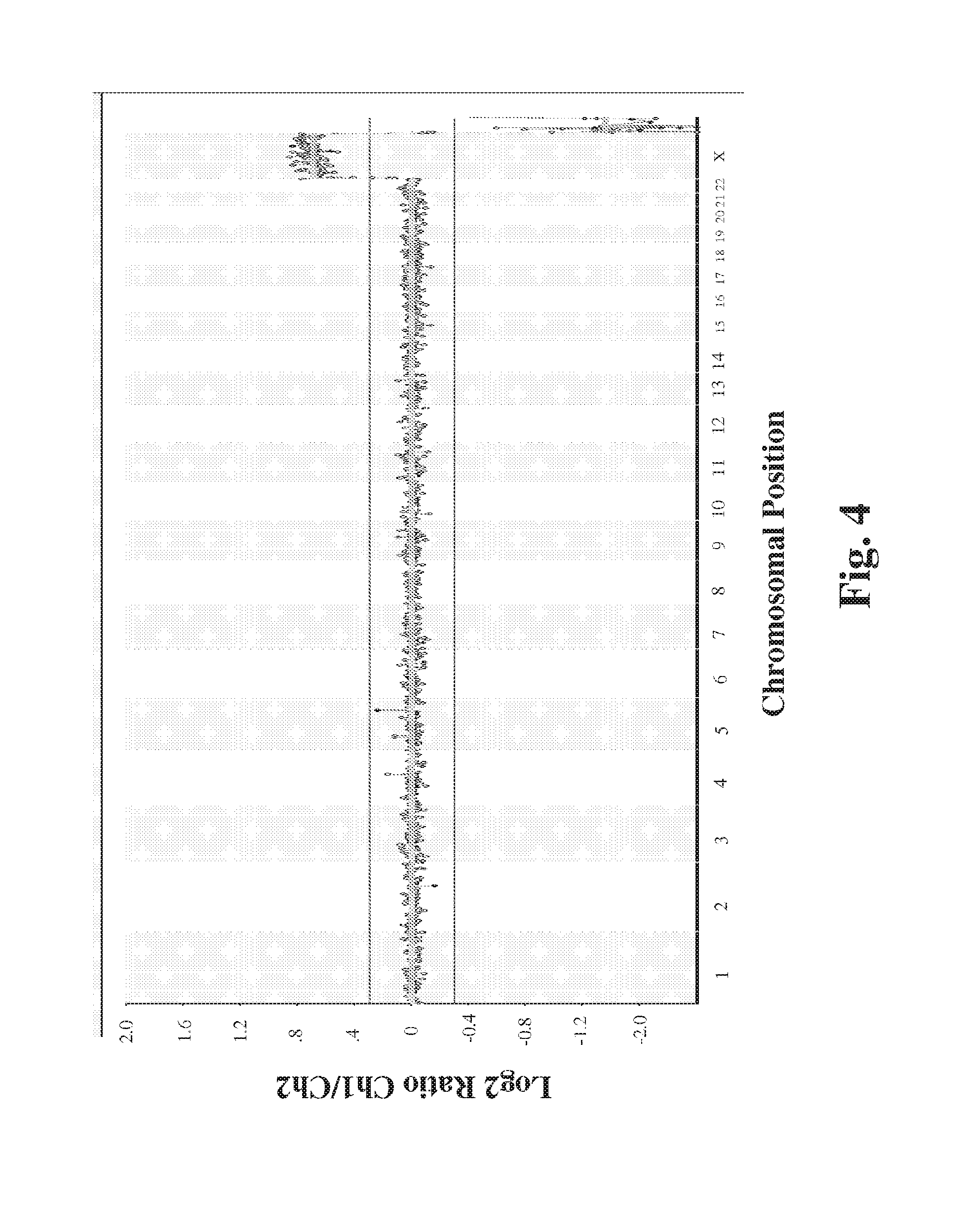Method for detection of fetal abnormalities
a technology for detecting abnormalities and fetal bodies, applied in the field of methods for detecting abnormalities of fetal bodies, can solve the problems of difficult medical conditions and decisions concerning abnormalities, common encounter of genetic diseases and chromosomal disorders, and significant risk
- Summary
- Abstract
- Description
- Claims
- Application Information
AI Technical Summary
Benefits of technology
Problems solved by technology
Method used
Image
Examples
example 1
[0034]Cell sample from cervical swab. A Pap smear cytobrush is inserted through the external os to a maximum depth of 2 cm and removed while rotating it a full turn (i.e., 360°). In order to remove cells from the brush, the brush is swirled in a test tube or vial containing 2-3 ml of either a methanol-based solution such as THINPREP PRESERVCYT solution (Hologics, Inc.), or PBS with or without 10% serum albumin
example 2
Trophoblast Enrichment by Density Gradient Centrifugation
[0035]Cells in medium were enriched by applying the sample to a silane-coated silica particle density gradient (ALLGRAD, LifeGlobal Media, Inc.) First the sample was centrifuged in collection media to concentrate cellular material and remove any methanol. The pellet was isolated and placed in a prepared density gradient conical tube with 10-15 layer of varying dilutions of density gradient (ranging from 5%-70%). The tubes were centrifuged at 1200 g for 10-20 minutes. The fraction of sample between 30%-50% density gradient was isolated, resuspended in 5 mL PBS with or without 10% serum albumin, and centrifuged at 1000 g for 5 minutes. The pellet was then isolated and resuspended in 1 mL PBS with 10% serum albumin.
[0036]Surprisingly, the inventors found that density gradient centrifugation could successfully enrich trophoblasts in a sample obtained from the maternal cervix. Enrichment of trophoblasts was unexpected because recov...
example 3
Trophoblast Enrichment by Collagen Adhesion
[0037]As an alternative to density gradient centrifugation, collagen adhesion is utilized to enrich trophoblasts in a sample. A cervical cell sample is seeded onto GROWCOAT collagen-1 coated plates (Sarstedt, Inc., Newton, N.C.) and cultured according to the manufacturer's instructions. Trophoblasts adhere to the collagen surface and cervical cells and debris can be removed by washing. Following the washing step, the trophoblast-enriched sample can be removed by enzymatic digestion, such as trypsin or HYQTASE (HyClone, Inc.) for further isolation of trophoblasts.
PUM
| Property | Measurement | Unit |
|---|---|---|
| Adhesion strength | aaaaa | aaaaa |
Abstract
Description
Claims
Application Information
 Login to View More
Login to View More - R&D
- Intellectual Property
- Life Sciences
- Materials
- Tech Scout
- Unparalleled Data Quality
- Higher Quality Content
- 60% Fewer Hallucinations
Browse by: Latest US Patents, China's latest patents, Technical Efficacy Thesaurus, Application Domain, Technology Topic, Popular Technical Reports.
© 2025 PatSnap. All rights reserved.Legal|Privacy policy|Modern Slavery Act Transparency Statement|Sitemap|About US| Contact US: help@patsnap.com



